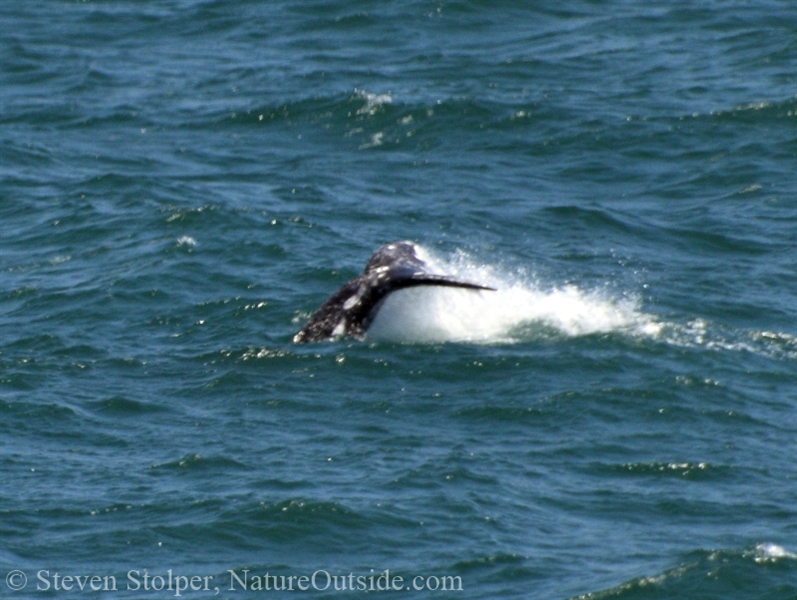
It’s the Saturday of Memorial Day Weekend. And I thought I’d hit the trail early and beat the holiday crowd. It turns out the crowd had the same idea.
Point Reyes
My plan is to hike to Tomales Point, in Point Reyes National Seashore. While Yosemite and Yellowstone get all the publicity, Point Reyes is quietly one of the prettiest places on Earth.
Tomales Bay separates the Point Reyes Peninsula from mainland California. The park occupies a huge swath of the north-running peninsula, with the bay to the East and the Pacific Ocean to the West.
The infamous San Andreas Fault lies directly beneath the 12-mile bay. The great rift in the Earth’s crust separates the peninsula from the rest of the continent. Geologists determined that some of the rocks in Pt. Reyes originated in the Tehachapi Mountains, more than 300 miles southeast of its present location! During the 1906 San Francisco Earthquake, the land west of the fault moved more than 20 feet northward!
The peninsula is 40 miles north of the Golden Gate Bridge. But it has been kept wild by its human residents who had the foresight to protect much of the area from development.
The Coast Miwok lived here for more than 8,000 years. They fished the bay’s tranquil waters and hunted game in the lush forest. Sir Fancis Drake laid claim to the entire area for England in 1579 (as he sailed by). And 25 years later Spanish explorer Don Sebastian Vizcaino gave the area its current name.
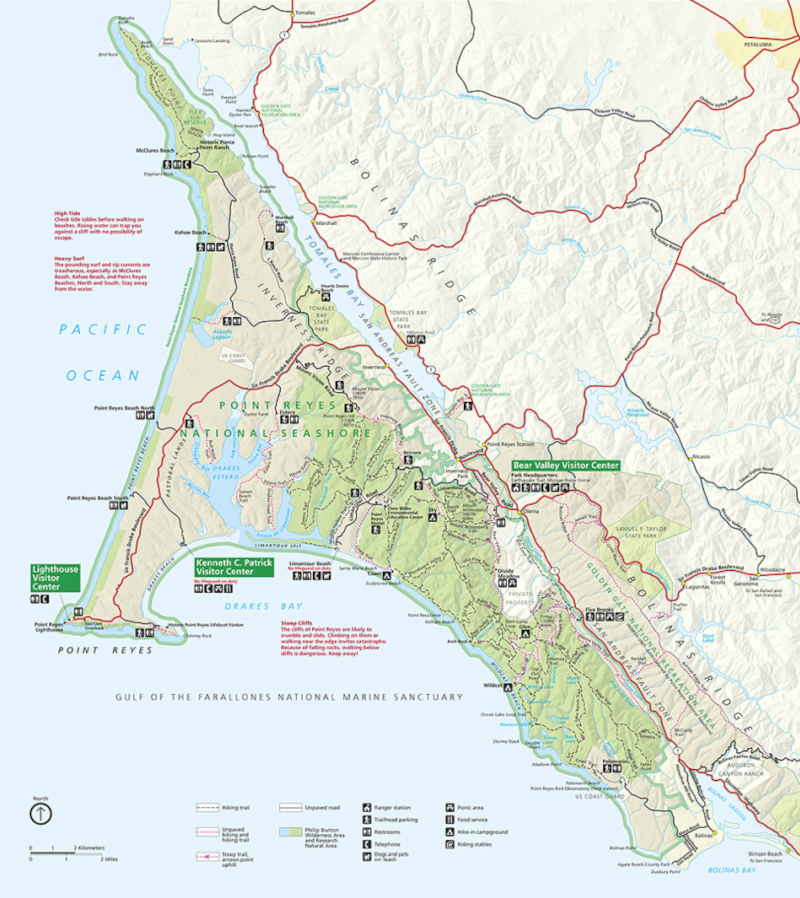
Map of Point Reyes National Seashore. Map by NPS.
Tule Elk
I’m hiking to the northernmost tip of the park. My journey takes me through the heart of the Tule Elk reserve. The 9.4-mile round-trip feels like an African safari. Herds of elk surround you as you hike.
Tule Elk is a subspecies of elk found only in California. It’s the smallest subspecies of all American elks, with the average weight of adult males only 450 to 550 lb. Females average 375 to 425 lb. It is about half the size of the Roosevelt Elk.
When the Europeans first arrived on the West Coast, an estimated 500,000 Tule Elk roamed California. But by 1895, habitat loss and poaching had reduced the elk population to only 28!
My understanding is that the elk became extinct in the Bay Area. The elk in the preserve are descended from animals reintroduced from a population in the central valley. Through conservation efforts, the Elk hold on.
My favorite time to visit is in late September to see the rut. So this spring trip is a new experience.
The Hike
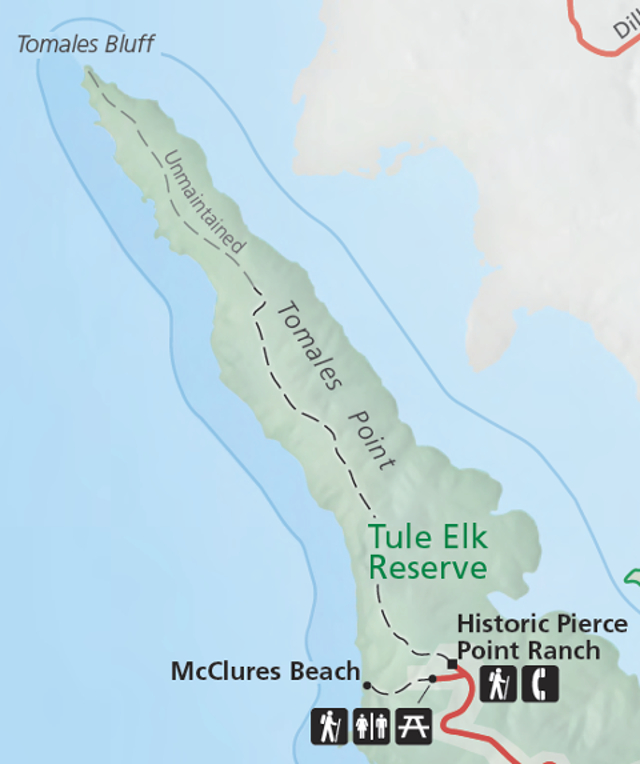
Trail map of hike to Tomales Point. (National Parks Service map)
I set out under overcast skies. The 58-degree (14 C) temperature is accompanied by a relentless breeze off the ocean.
The hike runs the length of the point. The first 3.7 miles follow a well-maintained trail. But the trail gives-way to coarse sand and scrub over the last 1.7 miles. It can take you by surprise if you’re not prepared.
As I set out on the trail, a California Quail eyes me with interest.
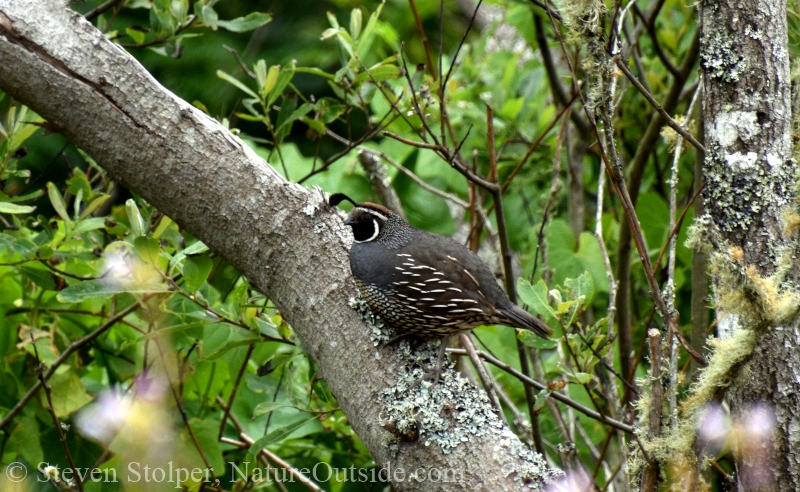
California Quail (Callipepla californica). Notice the black tassel above its head.
The trail offers views of the ocean to the west and the bay to the east.
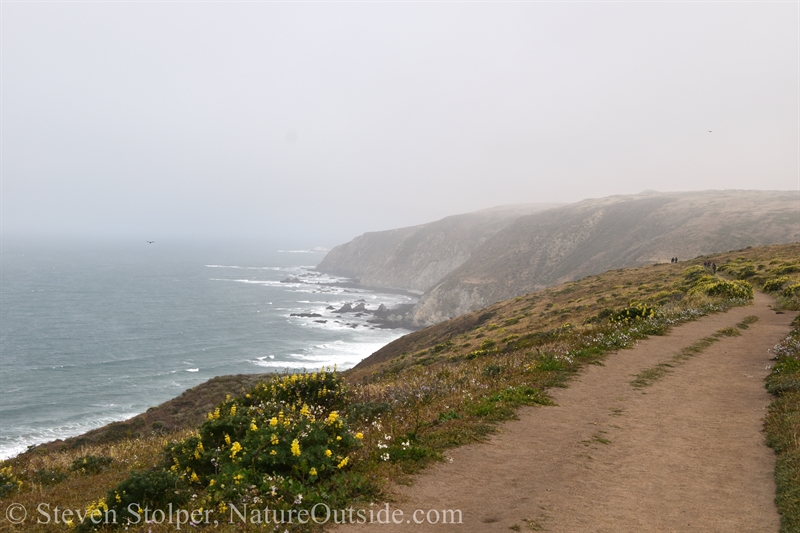
The trail runs along the clifftops at the edge of the peninsula.
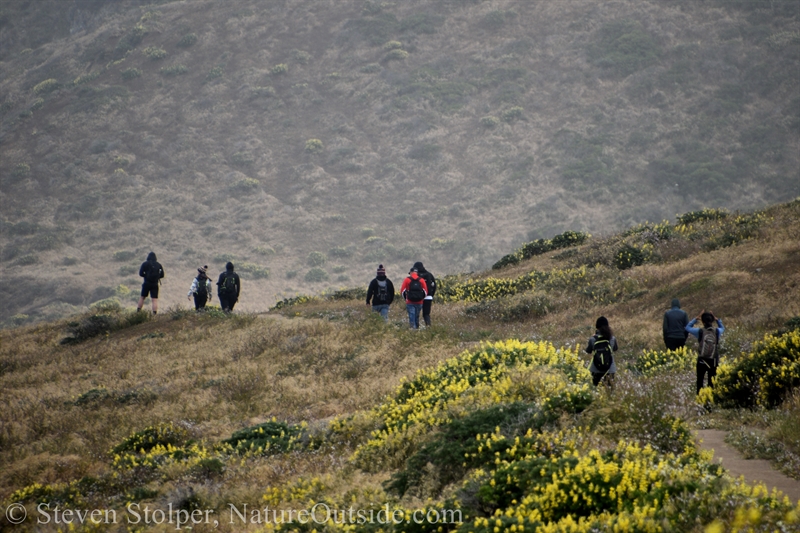
At the start of the trail, there were many hikers.
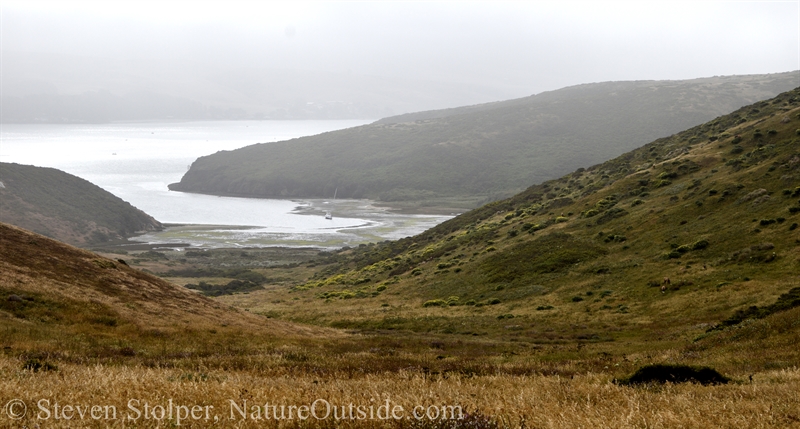
Looking east at an inlet of Tomales Bay. Is the sailboat aground in the low tide?
Coyote Morning
I move silently along the sandy trail. Despite the crowd in the parking lot, I hike alone. The trail is long enough that hikers are most likely concentrated at the ends of the trail and dispersed along it. This gives me a chance to see wildlife.
I stalk up on a coyote hunting small rodents. It moves from one side of the trail to the other, scenting for prey. It is so engrossed that it doesn’t sense my approach.
I fiddle desperately with my new camera, trying to get it to focus on the animal and not the surrounding bushes.
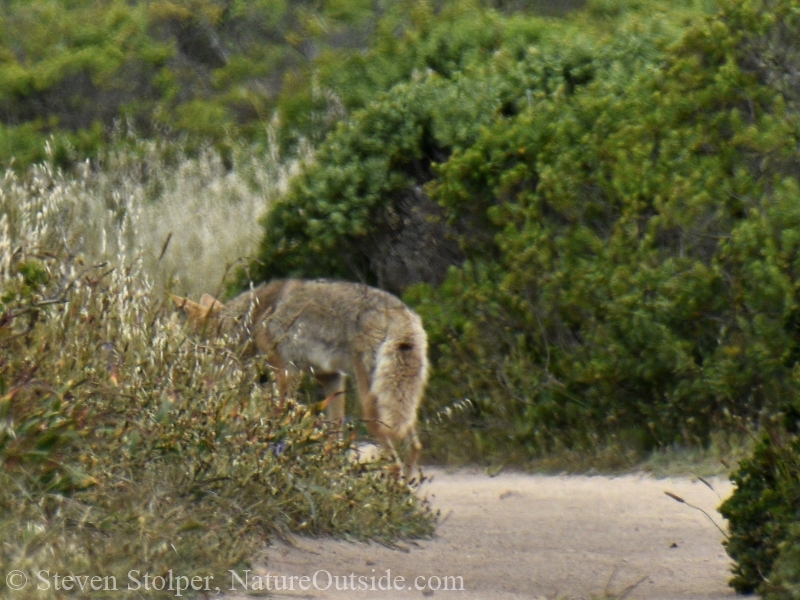
A coyote hunting along the trail in the cool overcast morning.
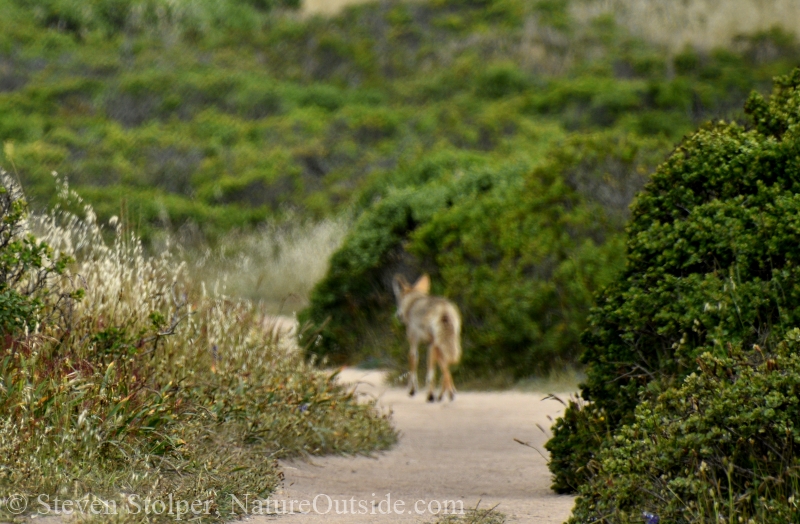
The coyote is unaware of my presence, as I struggle to focus my new camera.
Eventually, it disappears into cover and I continue my hike.
Elk Encounter
Spring is spectacular in Point Reyes. Wildflowers explode in color along the trail. The most dramatic is the mammoth, yellow, Tree Lupine (lupinus arboreus) that form clusters 8-10 feet wide and almost five feet high.
I spot a herd of female elk with young in tow. Their direction of travel leads to a water hole that I know is further down the trail. I use the screen of Lupine to snap some pictures.
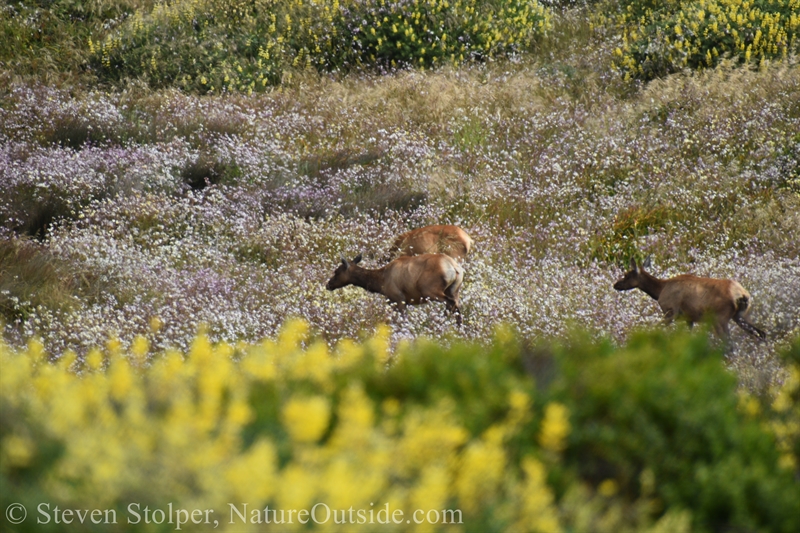
Peeking over a Lupine bush, I spy some Tule Elk foraging among the wildflowers.
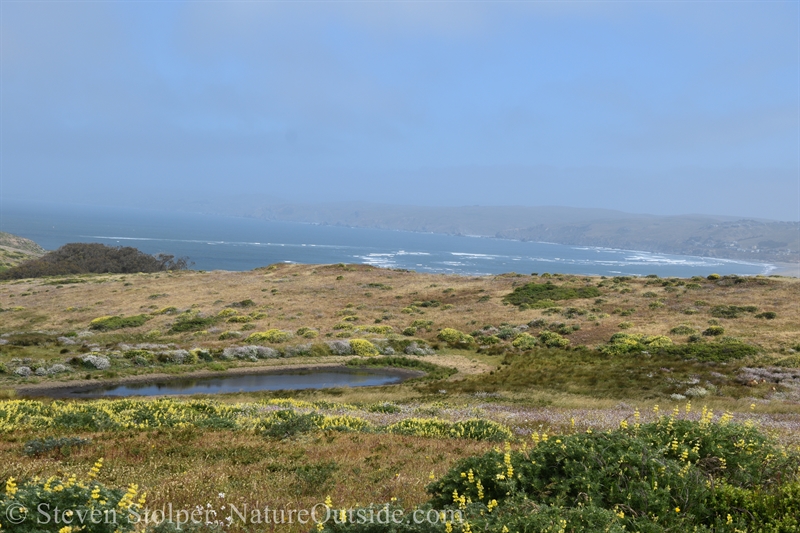
The elk are heading for the water hole. Tomales Bay is in the background, far below.
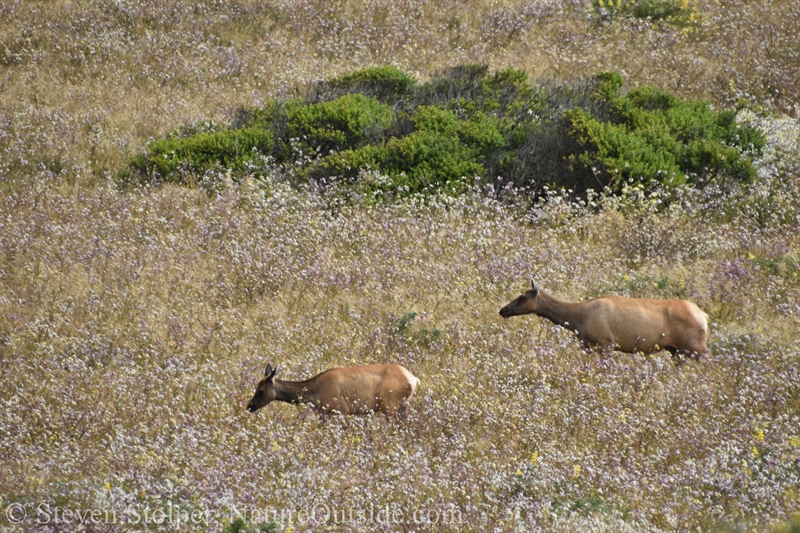
The wildflowers make the elk look like they’re moving through a painting.
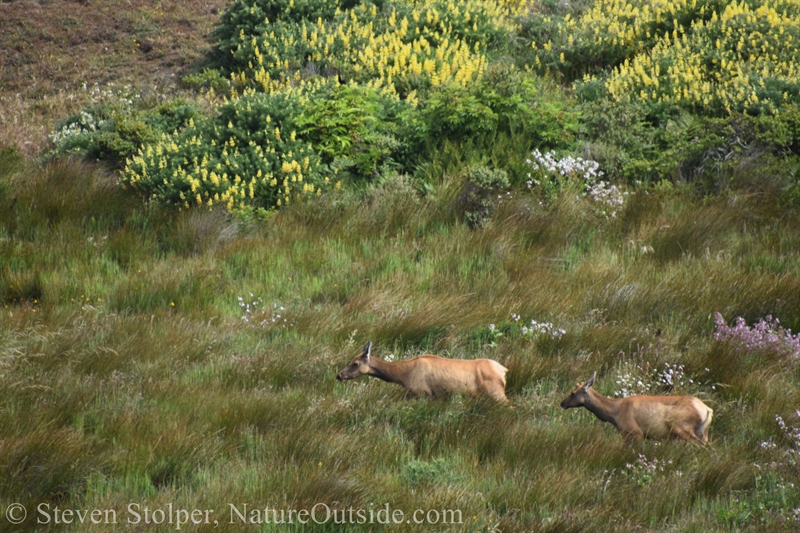
The elk family approaches the water hole.
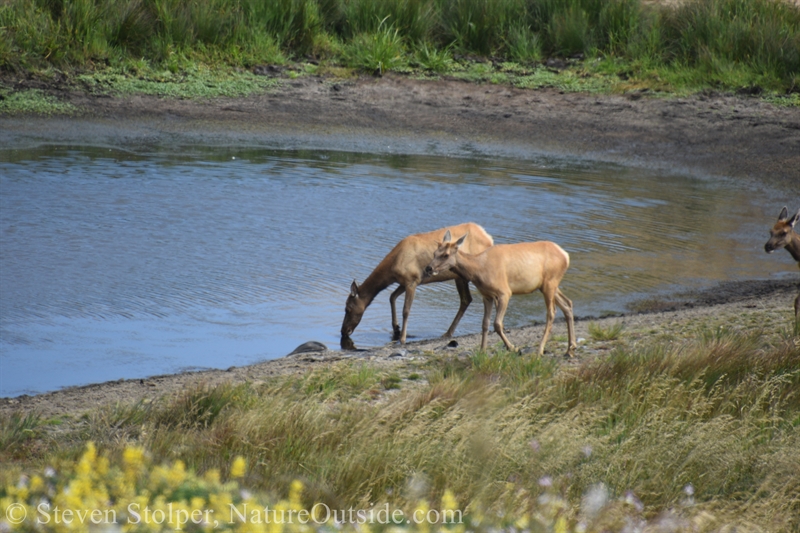
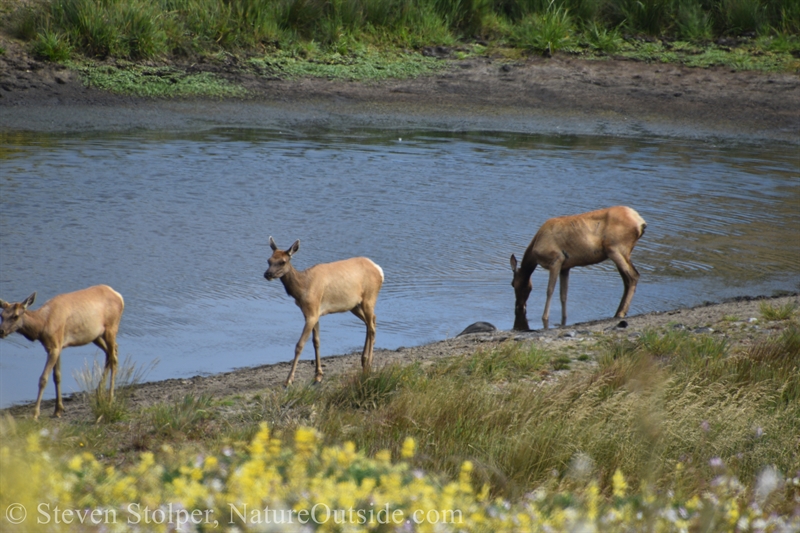
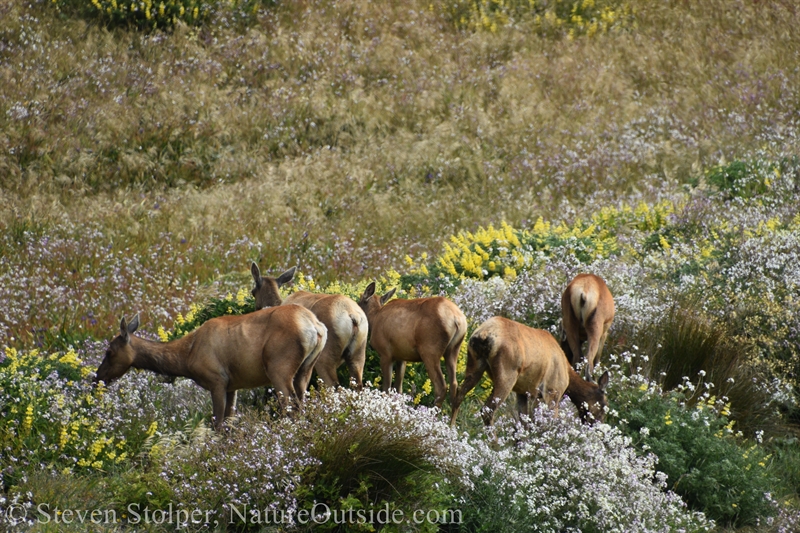
The elk seemed to enjoy feeding on the wildflowers.
Further down I find a group of males.
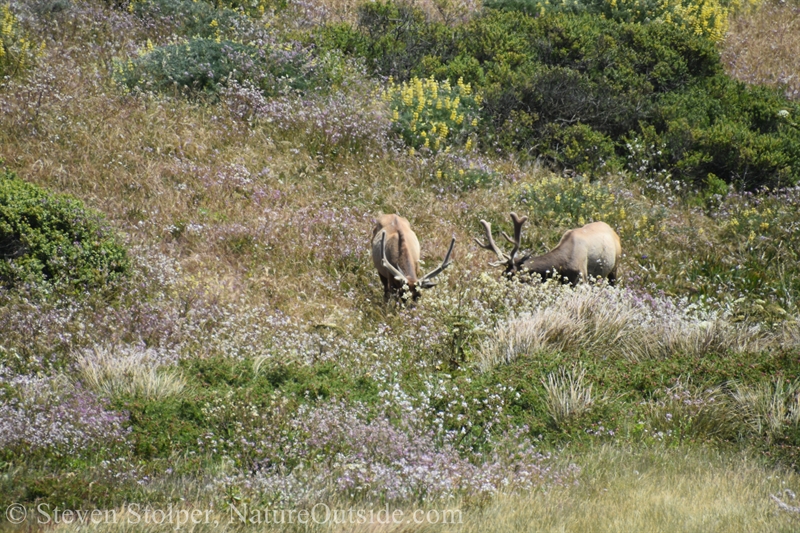
Their antlers are still covered in velvet.
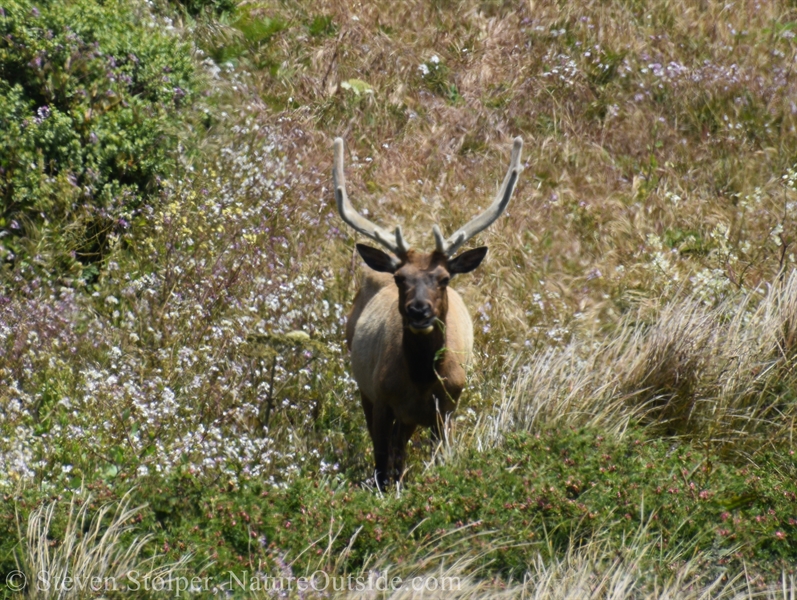
Tule Elk male.
Bird Rock
I continue down the trail past a clump of cypress trees. The trail turns to sand and walking becomes more difficult.
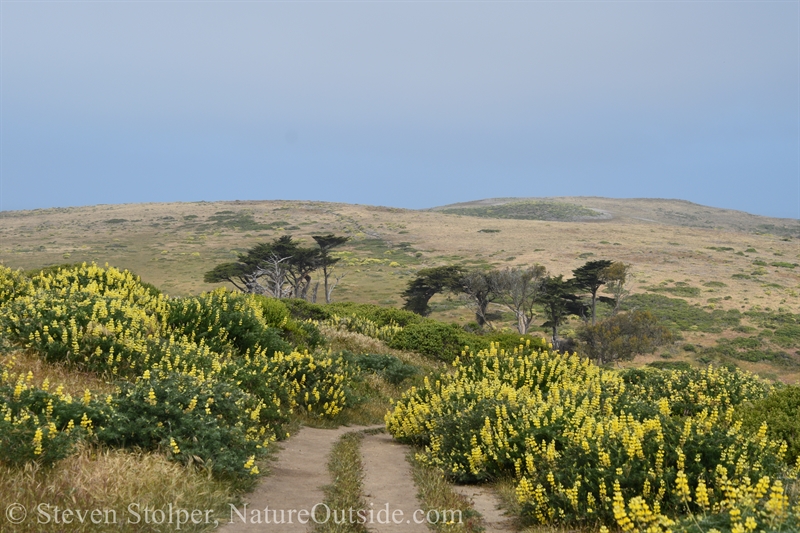
Looking north, toward the point.
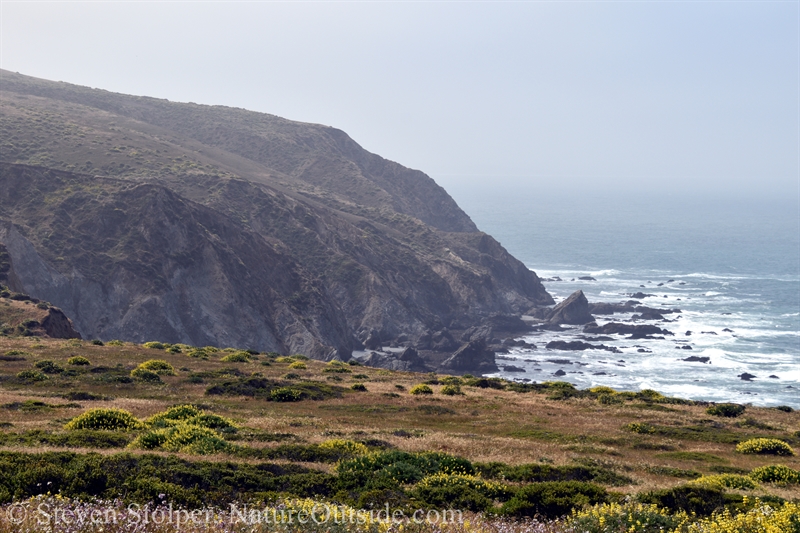
The trail runs along the top of dramatic cliffs above the Pacific.
I look toward the Pacific and spot Bird Rock. The 2-acre island is home to Double-crested Cormorants (Phalacrocorax auratus). It has hosted the birds for so long that the entire island has an appearance of white frosting. This is guano from the generations of birds that call the island home.
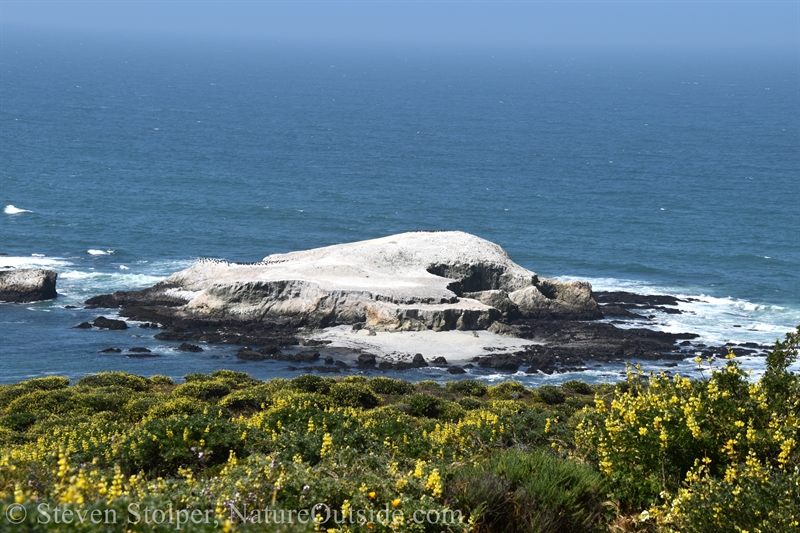
Bird Rock is an island off Tomales Point. Its white color is guano from the birds that live on the island.
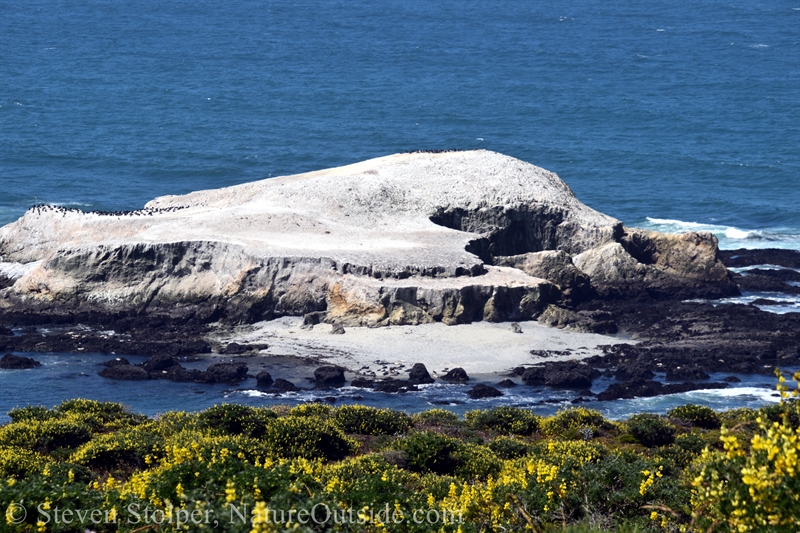
Bird Rock.
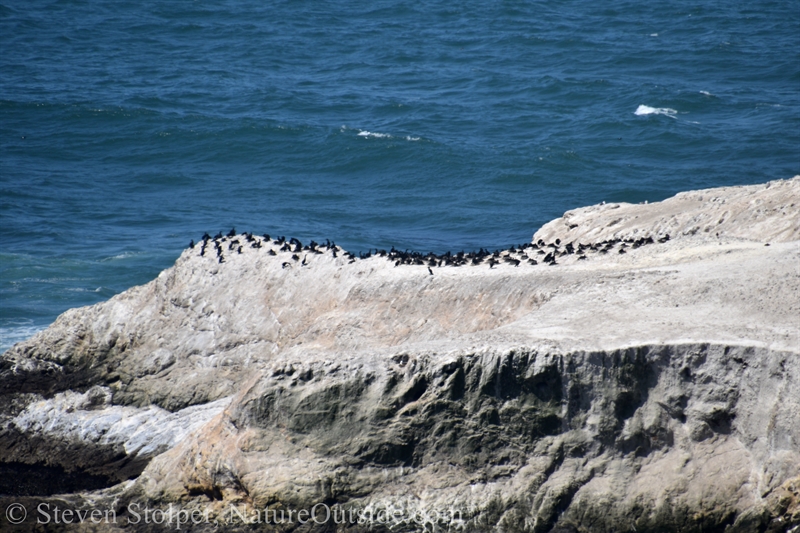
Bird Rock hosts a colony of Cormorants.
A Whale of a Surprise
A crowd of hikers greets me at the point. So I turn aside before I reach it and find a grassy spot overlooking the Bay.
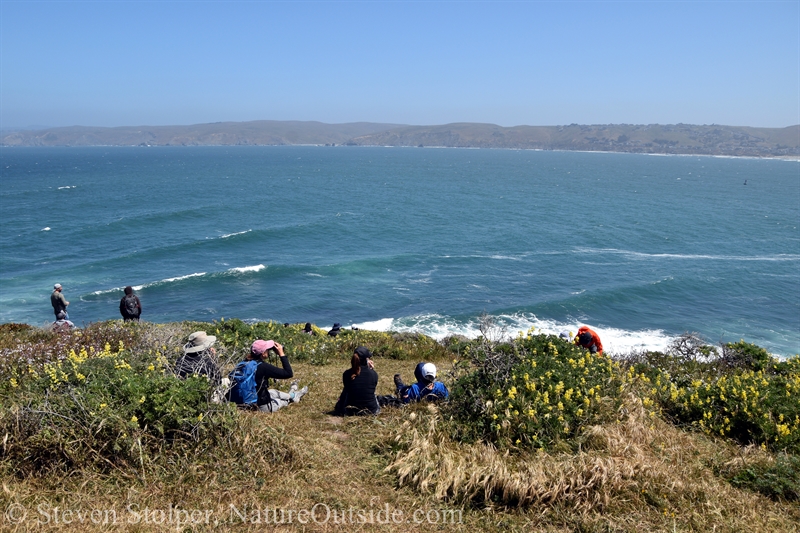
Fellow hikers have lunch while enjoying dramatic views of Tomales Bay and the Pacific Ocean.
As I sit, eating my turkey sandwich, I observe a flock of birds on the surface of the water. The birds are too distant for me to tell the species. There must be a school of fish hidden beneath the waves.
Movement catches my attention not far from the edge of the flock. Did I just see a blow?
I glance at the other picnickers and notice a woman in a pink baseball cap pointing binoculars at the spot that caught my eye. I look back to the water in time to see a large black form, covered by patches of white, break the surface. It disappears just as quickly. But a moment later its enormous tale rises from the waves as it plunges into the depths.
It’s a California Gray Whale (Eschrichtius robustus)! These huge Cetaceans can reach 49 feet long and weigh up to 60,000 lbs. They migrate along the coast of California, traveling between Alaska and Baja California. It’s the end of May. Are these northbound animals heading to Alaska? Or are they a resident population?
The whales feed on plankton and benthic crustaceans found in shallow waters. To get the crustaceans out of the mud, this baleen whale turns on its side and scoops sediments from the sea floor.
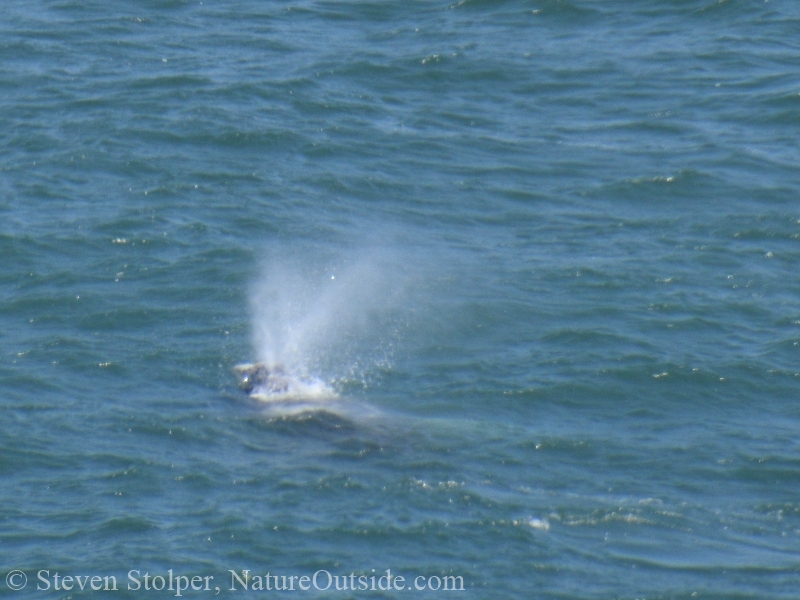
This California Gray Whale blows just after surfacing.
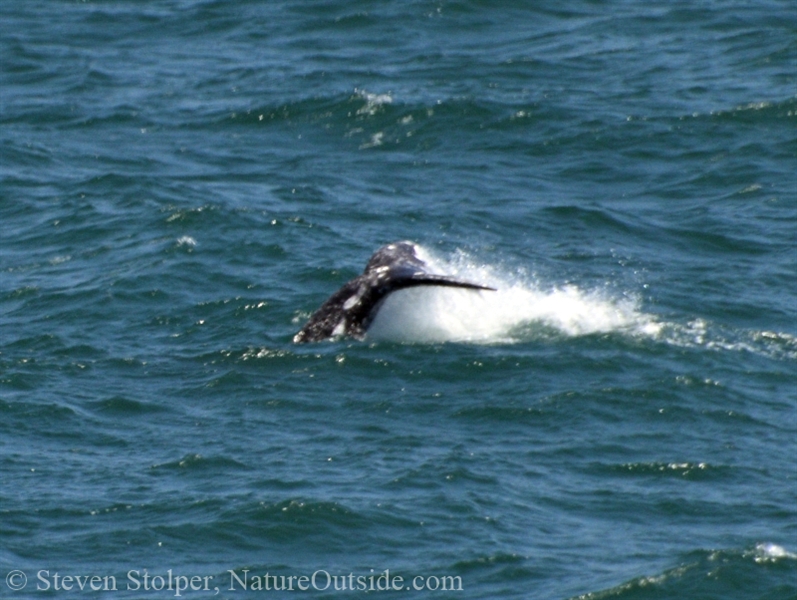
Once it fills its lungs with air, the whale dives below the waves to feed.
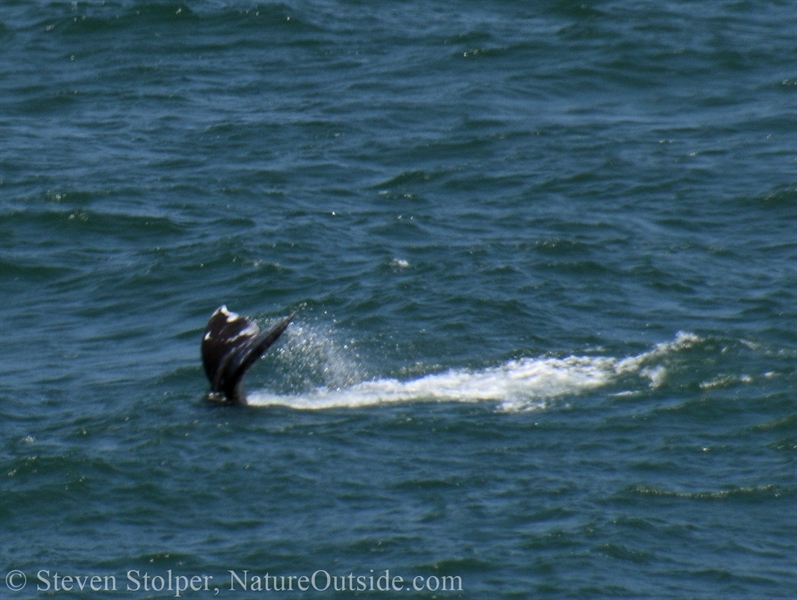
California is one of the rare places where you can go for a hike and see whales! As I munch my sandwich, two adults and a calf feed in front of me. A blow announces when a whale breaks the surface. It swims along for twenty to thirty seconds filling its lungs with air. Then it disappears, followed by its massive tail rising above the sea.
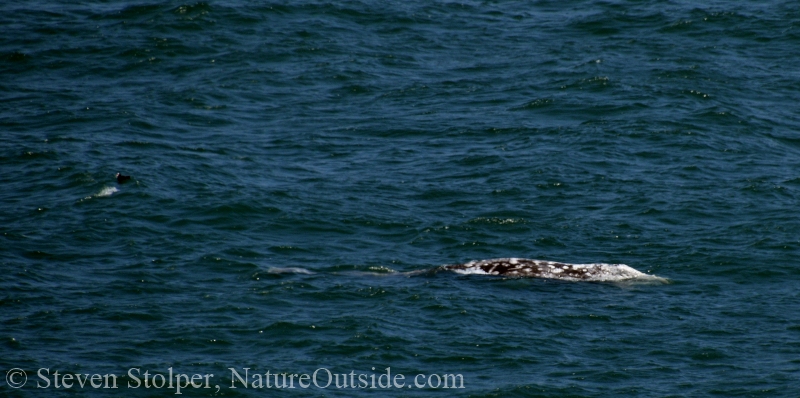
The whale swims along the surface to inhale air for its next dive.
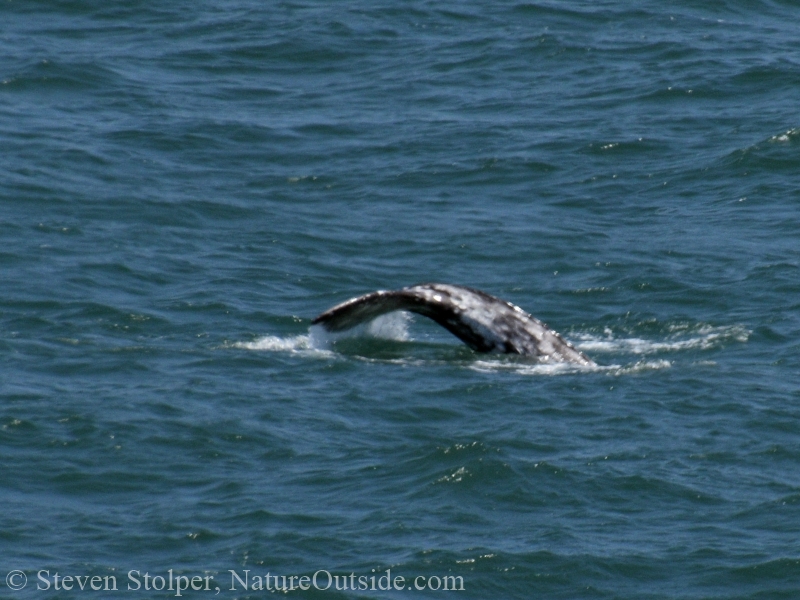
The white areas of skin are thought to be scars from parasites, that have since fallen off the whale.
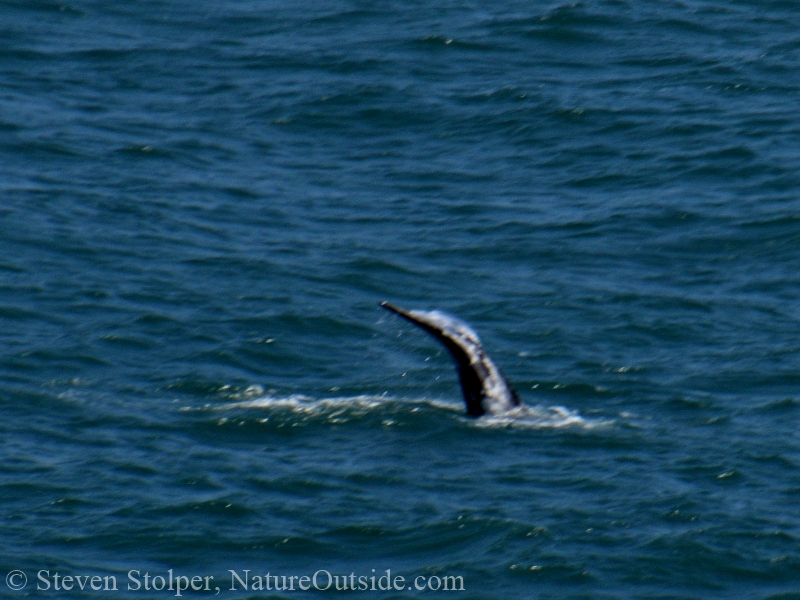
A whale disappears below the surface.
Few of the picnickers notice the whales. Either they are not paying attention, or more likely do not understand what they’re seeing. I point them out to a few friendly passersby. But most are blissfully unaware of the show in front of them.
Pierce Point Ranch
After lunch, I reluctantly depart. The whales continue to feed as I turn back toward the trail.
My hike is uneventful and I reach the trailhead at Pierce Point Ranch. The ranch was here since the 1870s, providing milk and butter for San Francisco. The historic buildings still stand, and I make my way through them before heading home.
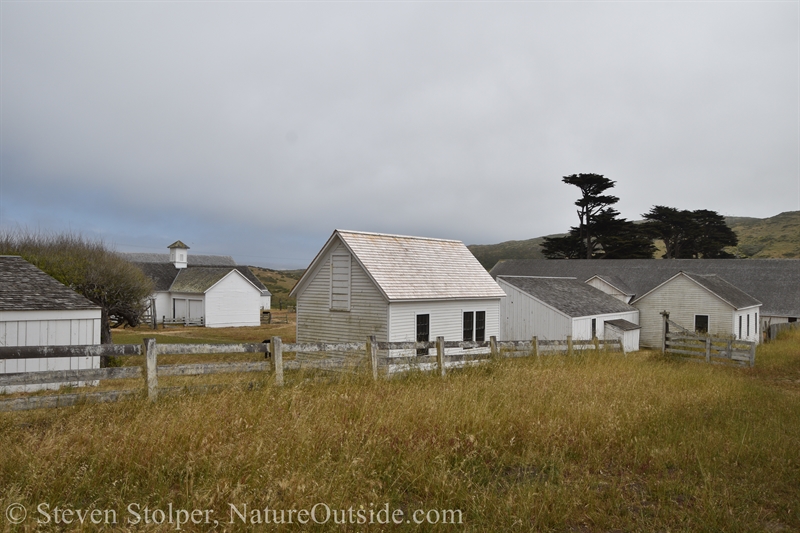
The historic buildings of Pierce Point Ranch.
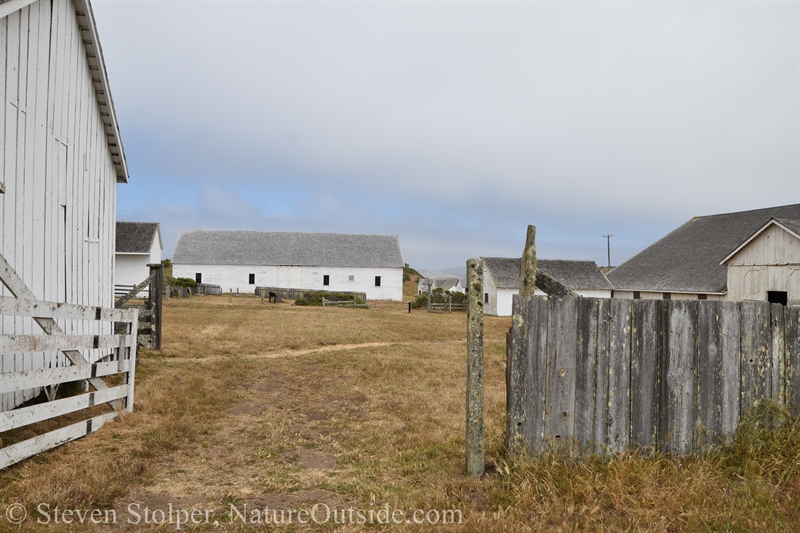
I stroll through the farmyard of the old dairy and read the interpretive signs.
Have you seen unusual marine life on any of your hikes? Let me know in the comments below.
Related Articles on NatureOutside
Building a Tule Boat! (Part 1 – The California Boat)
For fun facts and useful tips, join the free Bushcraft Newsletter.



Welcome back, Steve. You hit the triple combo with the animals, birds and wildflowers! That’s what I call a really successful outing. Hope to see you on the trail again on one of your nature hikes.
Thanks, Ardis! It was a great hike to start the summer. Hope to see you when organized hikes resume!
Excellent descriptions! … I love this hike and also kayaking tomorrow’s Bay I have seen more wildlife than you can shake a stick at! …
I am nearing retirement… And I have many many documented hours of community college level natural history courses….
How does one become a “certified” naturalist?
Thanks for the excellent article
I’ve kayaked in Tomales Bay as well. I enjoy it but there are sometimes strong currents.
Timothy, if you’re interested in becoming a naturalist, go for it! I write about how to become a naturalist here: https://www.natureoutside.com/i-am-a-california-naturalist/
It has a link to the California program. There are courses all over California and I know they teach a course very near Pt. Reyes.